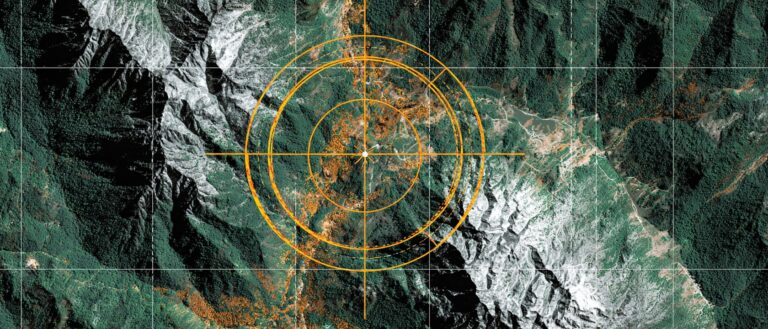If These Technologies Had Been Available Thirty Years Ago, the Tragedy in Kekexili Would Not Have happened.

Wild animals are products of nature, but many precious wild animals are illegally killed in large numbers by poachers because of their edible, medicinal or craft value. Many wild animals are on the verge of extinction. Technologies such as artificial intelligence can play a relatively large role in helping to protect wild animals and enable us to live in a more complete world.
A group of Tibetan antelopes were running across the wilderness. Several jeeps drove over and then rapid gunfire rang out. The fleeing sheep fell to the ground with a thud amidst stray bullets...
The camera turned and hundreds of Tibetan antelope skeletons were abandoned on the desolate sandy land. The cruel poachers had stripped away the precious skin and flesh and walked away.

This is a clip from the movie "Kekexil". This film, adapted from real events, tells the story of the crazy poaching of Tibetan antelopes in Kekexili, Qinghai Province in the 1980s and 1990s.
During that period, due to a large number of illegal hunting, the number of Tibetan antelopes dropped sharply from several million to more than 10,000 in a few years, and there was a trend of extinction..
Some wild animals have very valuable items, such as antelope wool, ivory, rhino horns, etc. These extremely valuable items in human society hide a huge chain of interests.
Because of this, criminals are willing to take risks and even disregard legal provisions to cruelly hunt and kill these wild animals.
Protecting wildlife is urgent
The commercial use of wild animals is the reason why they are hunted in large numbers. For example, a scarf made from the cashmere of Tibetan antelopes can be sold for thousands or even tens of thousands of dollars.
Wildlife trade is divided into legal trade and illegal trade. The former is normal trade permitted by law, while the latter is smuggling that is expressly prohibited. Poaching is the source of illegal trade.
The World Wildlife Fund reported in 2018 thatFrom 1970 to 2014, wildlife populations have declined by nearly 601,000 The increasing rate of species extinction is closely related to human activities.
In addition to habitat loss, environmental pollution and other problems, severe poaching is the main reason for the endangered status of some species.
Fortunately, with the development of technology, the involvement of various devices, and especially the massive generation of relevant data, technologies such as AI have found their place.Animal protection solutions developed through AI algorithms, drones and other technologies are combating poaching from multiple angles..
Drones and computer vision to protect you at night
Most poaching occurs at night, when animals are mercilessly shot under the cover of darkness. In Hoh Xil, some sheepskins were peeled off at night by herders who were forced into a dead end by desertification for 5 yuan each.
In order to ensure the safety of wild animals late at night.An organization called Air Shepherd is using drones with integrated thermal imaging and artificial intelligence systems to help protected areas monitor wildlife movements.The focus of their work is to use image classification and object detection methods from thermal imaging images obtained from drones to accurately identify animal movement images and detect possible poachers.

The SPOT system they used, built by researchers at the Center for Artificial Intelligence in Society at the University of Southern California, first distinguished between animals and people through manual labeling and labels automatically generated by drones.Convolutional Neural Network Model, so that the system can learn to recognize animals or humans in pictures.
Air Shepherd has reportedly been so successful in South Africa that in an area where 19 rhinos were killed per month, no rhinos were killed within six months of deployment, and plans are underway to deploy it more widely in other areas.
Acoustic sensors and machine learning create an “alarm hotline”
In such a large nature reserve, it is impossible for patrol officers to cover everything. In Hoh Xil, the smart patrol officers mainly use factors such as wheel tracks and wind direction to determine the whereabouts of poachers and give chase.
Now, there are many ways to replace those old-fashioned experiences and provide a full range of positioning and judgment.
A family called Conservation Metrics companies, and Microsoft, using Microsoft AI Developed a set of tools,Analyze and locate animals in the reserve from the perspective of sound.

They use acoustic sensors to collect data from the rainforest, and then use machine learning algorithms to filter out the calls of certain animals, determine the behavior of the animals, and thenBuild a map of animal movements.
In addition to revealing animal behavior, this information can also provide conservationists with early warningsIf the sensor picks up the sound of animals in danger or noises made by poachers (such as gunshots and human voices), it will sound the alarm in time.
In one project, researchers collected about 900,000 hours of recordings from forests in Central Africa, including thousands of hours of elephant sounds, and found that for elephants, low-frequency rumbles signaled contact with one another, while long, overlapping rumbles signaled greetings.
It would take a lot of time to process such a large amount of data, but using AI algorithms to analyze and process it is efficient and accurate..

Their largest project currently involves a network of 50 sensors monitoring 1,243 square kilometers of forest, recording forest sounds equivalent to 2 million songs every 3-4 months. By analyzing large amounts of audio with the help of artificial intelligence algorithms, they have successfully helped combat several poaching incidents.
Intelligent algorithms and game theory are superior in strategy
In Hoh Xil, the failure of the final capture was due to the fact that the rangers underestimated the cruelty of the poachers and there were loopholes in the capture plan. In the end, the two were surrounded by a group of bad guys, and the patrol captain also became an innocent soul under the gun of the poachers.
In order to make the best strategic solution, the University of Southern California Artificial Intelligence Center has developed a capture system.Wildlife Conservation Assistant》Protection Assistant for Wildlife Security, referred to as PAWS.
It is a research system based on artificial intelligence planning and behavior modeling, which can assist patrol officers in route planning. The essence of PAWS is to make the best decision based on information analysis.

PAWS' core algorithm integrates machine learning, game-theoretic reasoning, and route planning to predict poachers' behavior.PAWS learns behavioral models of poachers from collected crime data.
Based on the behavioral model of poachers, PAWS calculates a random patrol policy in the form of a set of patrol routes and the probability of taking each route. PAWS then plans the optimal patrol route from the policy.
By using an ensemble of decision trees, they demonstrated the superiority of PAWS in both experimental and practical tests.

The decision tree algorithm is a "white box" method that allows users to easily view the learning model (in the form of logical rules) and evaluate whether the decision tree can make reasonable inferences about the poachers' behavior, facilitating human control.
In a field test in 2018, the PAWS prediction model worked so well that rangers confiscated more than 500 snares in one month. Without PAWS, only 101 snares were found per month on average!
Protect wildlife so that humans do not become an isolated island
If these methods had been invented 30 years earlier, perhaps the tragedy in Hoh Xil would not have happened. But after all these years, poaching still exists, so the benefits of technology are actually very limited.
The famous poet John Donne has a famous line: No man is an island. It is used to describe the close relationship between individuals and the whole.
For species on Earth, no species can survive independently. Once a certain wild animal becomes extinct, it will cause great damage to the entire ecology and will eventually affect humans.
Of course, in recent years, more and more attention has been paid to the protection of wild animals, such as the well-known public service advertisement, "No buying, no killing."

The poaching of wild animals is not just a simple moral issue. What technology can help and solve is to significantly reduce the opportunities for predators to take advantage of the animals, so that both animals and humans can survive longer.
-- over--








